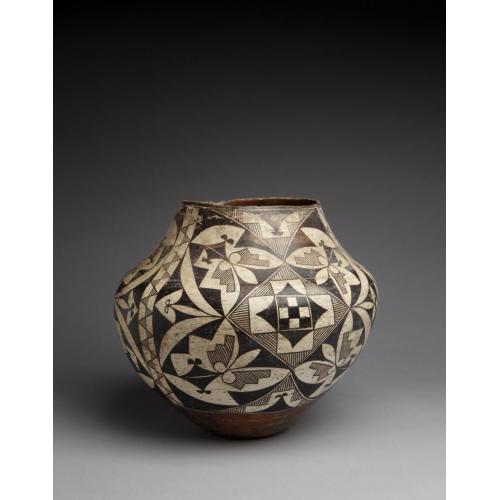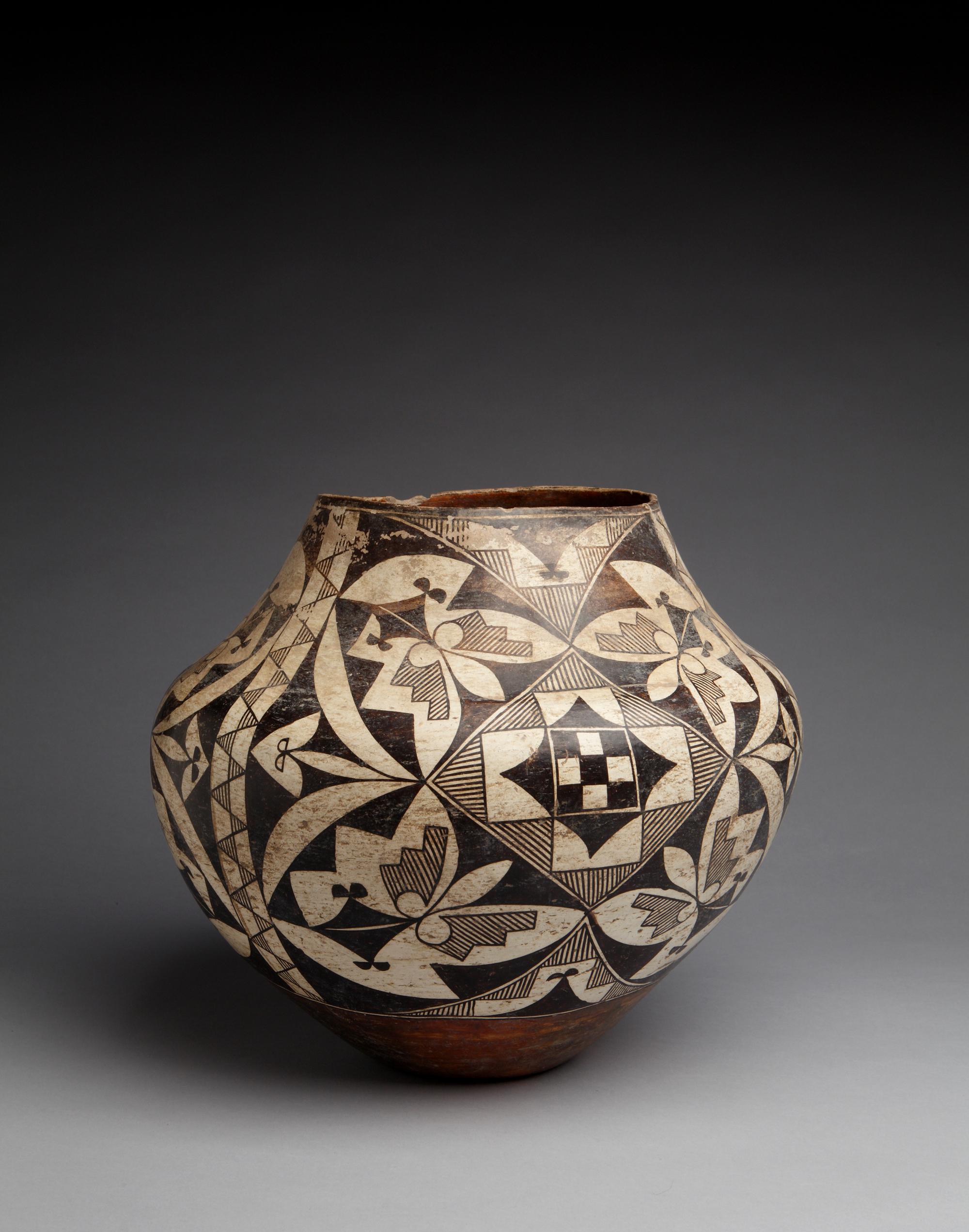
Photograph by Addison Doty. Copyright 2014 School for Advanced Research.
Water jar
Date: 1890-1900
Artist or Maker: Unknown
Dimensions:
Dimensions: 30.5 × 33 cm (12 × 13 in.)
Weight: 2.4 kg (5.4 lb.)
Medium: clay | paints
Credit Line: Indian Arts Fund purchase for the permanent collection, 1923.
Place Made:
Valencia County, New Mexico, Southwest, United States, North America
Object Number: IAF.54
Not on view
Tribal Collection Review RemarksAccording to the potter participants in the Acoma collection review visit April 22-24, 2015 (Events Record “Collection Review: Acoma Pueblo, Review 1”): This jar is decorated with three repeating panels. They are separated by narrow vertical white stripes with alternating triangles filled with rain lines. These represent lightning and rain. The three panels are very detailed and contain cloud and floral designs arranged around checkerboard-like designs at their centers. The white squares of the checkerboard-like designs may represent eyes, snowflakes, or hail. Parallel lines used to fill shapes represent rain. Three black triangle shapes located just below the rim each contain a white circle with a black dot in the center. These may represent mountains, with the white circles representing the eyes of the mountains. Each of the triangles is surrounded by white step shapes that represent clouds. Parallel lines in the triangles beneath the cloud shapes represent rain. (See the Annotated Photo in the Media card for this record.) A thin wash of reddish slip was applied to the interior of the jar.
There are no line breaks present on this jar, and there are only three decorative panels, instead of four, so it’s likely the jar was intended for utilitarian purposes, rather than ceremonial ones. (Not all jars that have four panels are ceremonial, but four is a very important number for Acoma people, so sometimes four-panel jars serve ceremonial purposes.) Another explanation is that due to the level of detail in the designs, the potter may have felt she or he only had room enough for three panels instead of four.
According to the participants in the Acoma collection review visit February 26-27, 2019 (Events Record “Collection Review: Acoma Pueblo Review 12”): The shape of a water jar is characterized by usually having a concave base (can also have a flat base) leading to a wider body and shoulder area. The shoulder, which is typically rounded but can also be sharp, leads inward and up to the neck and opening of the water jar. Historic water jars will sometimes have an indentation from the base the pot was built on (also known as a puki).
Water jars of all sizes are made and used. Medium to small size water jars
are more commonly used to carry water as the weight of a filled water jar can become quite heavy. Large sized water jars would be used for storing water. Today at Acoma, water jars are still being used and made in both traditional natural and commercial materials.
In Collection(s)
Bibliography:
The Indian Arts Research Center, in collaboration with Native American community scholars, strives to present accurate collections records. Records may be updated as new information becomes available and is reviewed with the Native American community having cultural affinity to particular items. Please write to iarc@sarsf.org if you have questions or concerns related to the documentation.

